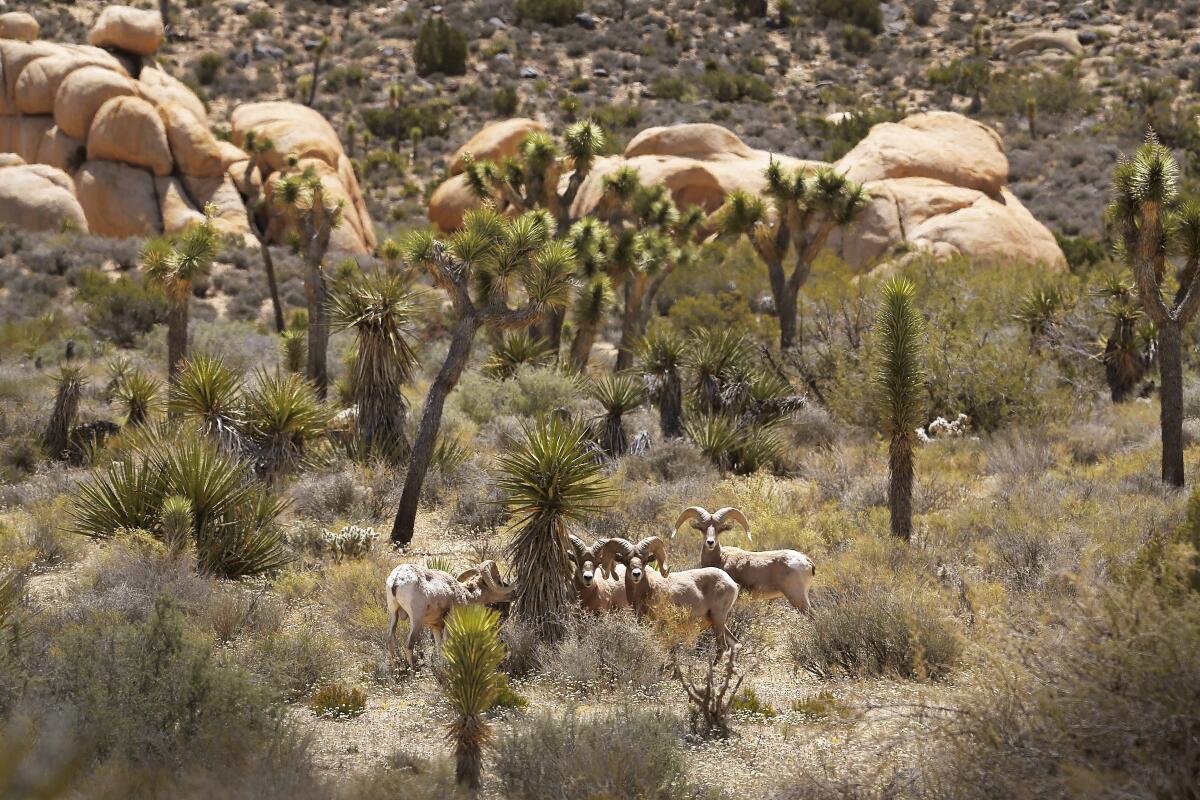Extreme drought prompts closure of Joshua Tree trail to ensure water for bighorn sheep

- Share via
Extreme drought conditions prompted the open-ended closure of a popular hiking trail in Joshua Tree National Park to ensure water access for bighorn sheep.
The closure of the Fortynine Palms Trail began last week and “will remain in place until summer monsoons provide adequate rainfall to increase water availability,” the National Park Service said in a statement.
Bighorn sheep, with their iconic curled horns, increasingly must rely on an oasis spring in the trail area as drought has made surface water more difficult to find in other areas of the park.
The Fortynine Palms Oasis is one of a small handful of areas in the park with reliable access to water for wildlife. The oasis itself is always off-limits to hikers as it is a “sensitive biological area” and a “crucial water supply for plant and wildlife,” according to the National Park Service.
The South Coast hydrologic region, which includes Los Angeles, used 25.6% more water this April than in April 2020
Joshua Tree National Park has experienced a tourism boom with a record 3.06 million visitors recorded in 2021, up 50% from 2015.
The NPS estimates that up to 200 bighorns live in Joshua Tree with a total population of around 13,000 across regions of California, Nevada, Arizona and Utah.
“Recent research in Joshua Tree has shown a significant loss of open water in the form of springs and seeps,” according to the NPS. “This loss of water, especially during the hot and dry summer months has contributed to a significant loss of available habitat [for bighorn sheep].”
The San Bernardino County Board of Supervisors has approved a new ordinance that increases fines for unlawfully taking a Joshua tree.
As the drought worsens, the sheep are driven to higher elevations to seek water.
“This will likely cause more genetic isolation than bighorn populations already face and could lead to them not being able to live in the park,” according to the NPS.
But the sheep are not the only desert dwellers put at risk by climate change — desert tortoises, reptiles and birds are also facing habitat loss and increased temperatures could make the park uninhabitable for them.
More to Read
Sign up for Essential California
The most important California stories and recommendations in your inbox every morning.
You may occasionally receive promotional content from the Los Angeles Times.
















